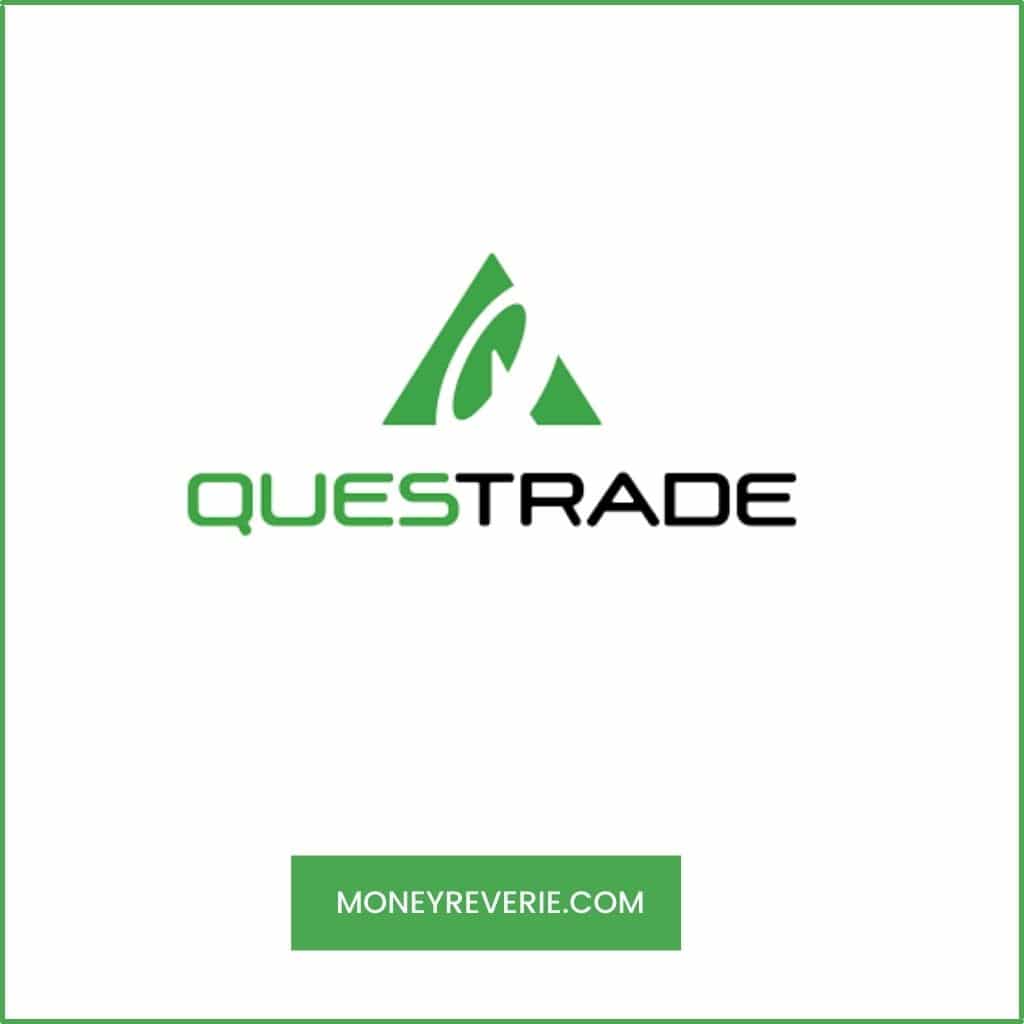Are you looking to invest in the U.S. market but want to avoid dealing with the hassle of currency exchange? As a Canadian investor, buying an Exchange Traded Fund (ETF) that invests in the U.S. market through stock indexes is the easiest way. And if you’re looking for a stable and diversified investment option, then the S&P 500 ETFs are the answer you’re looking for.
As someone who’s always on the lookout for the best investment opportunities, I’ve personally found that S&P 500 ETFs offer a simple and cost-effective way to invest in the U.S. market. They allow access to the stock index without buying individual stocks and have offered Canadian investors an excellent medium to invest in the S&P 500 since 1957.
In this article, I’ll share the six best S&P 500 ETFs in Canada for 2022. I’ll discuss why you should consider investing in them, how to buy them in Canada, and what to expect from each option.
So, let’s dive right into it and explore the best S&P 500 ETFs in Canada for your investment portfolio.
What are S&P 500 ETFs?
The S&P 500 is the world’s most widely tracked index. It comprises the 500 largest US companies based on market capitalisation, heavily weighted towards the largest companies such as Apple, Microsoft, Tesla, Amazon, and Google.
Investing in individual stocks can be difficult and time-consuming, making S&P 500 ETFs a popular choice for investors. ETFs allow you to spread your risk across many companies, are more liquid, and have lower fees than purchasing individual stocks.
S&P 500 index ETFs aim to give investors the same return as the index and are passive investments with no active portfolio manager involvement.
The index rebalances quarterly and is considered a proxy of the US equity market, covering approximately 80% of available market capitalisation.
Investing in Canada’s best S&P 500 ETFs allows you to gain exposure to the US market without the hassle of currency exchange.
The 6 Best S&P 500 ETFs in Canada For Long-Term Growth
There are different S&P 500 ETFs available in Canada, and choosing the best fit for your investment goals and financial situation can be challenging.
We have researched and selected the best six S&P 500 ETFs in Canada. Understanding the various ETFs, what they have in common, and where they differ will help you easily select the best fit for you.
1. Vanguard S&P 500 Index ETF (VFV)
- Inception Date: November 2, 2012
- Stock Price: $93.20
- Assets under Management: $7.29 Billion
- Management fee: 0.08%
- Management Expense Ratio: 0.09%
- Issuer: Vanguard Canada
- Ticker: VFV.TO
- Risk Rating: Medium
- Management Style: Passive
- Distribution Yield: 1.45%
- 12-month yield: 1.34%
- Distributions: Quarterly
The Vanguard S&P 500 Index ETF (VFV) is one of Canada’s best and most inexpensive ETFs on this list. Offered by Vanguard Canada, it provides investors exposure to the S&P 500 ETF and passively tracks the S&P 500 index.
It concentrates your investments in U.S. large-capitalisation stocks. Regarding fees, VFV is known as the most inexpensive Canadian ETF tracking the S&P 500.
Since its inception in 2012, VFV has had a long performance track record and massive assets under management. Like most equity investments, it offers a low yield with quarterly distributions and is rated medium risk.
With Vanguard Canada as a reputable household name in the investment world and VFV being the most cost-effective ETF in Canada, VFV is a top choice when considering which ETF to buy.
2. Vanguard S&P 500 Index ETF CAD-Hedged (VSP)
- Inception Date: November 2, 2012
- Stock Price: $68.25
- Assets under Management: $2.430 Billion
- Management fee: 0.08%
- Management Expense Ratio: 0.09%
- Issuer: Vanguard Canada
- Ticker: VSP.TO
- Risk Rating: Medium
- Management Style: Passive
- Distribution Yield: 1.56%
- 12-month yield: 1.46%
- Distributions: Quarterly
Like VFV, vanguard S&P 500 Index ETF CAD-Hedged (VSP) invests directly in the U.S. stock market included in the S&P 500. The VSP is the hedged version of the VFV.
VSP is hedged toward the Canadian dollar, allowing the ETF to hedge against the currency fluctuations of the Canadian dollar.
However, VSP provides investors with lower returns than its unhedged counterpart, VFV. Despite having the same MER, VSP pays a lower annualised distribution yield.
RELATED: VFV vs VSP
3. iShares Core S&P 500 Index ETF (XUS)
- Inception Date: April 10, 2013
- Stock Price: $79.24
- Assets under Management: $4.69 Billion
- Management fee: 0.08%
- Management Expense Ratio: 0.09%
- Issuer: Blackrock iShares
- Ticker: XUS.TO
- Risk Rating: Medium
- Management Style: Passive
- Distribution Yield: 1.58%
- 12-month yield: 1.28%
- Distributions: Semi-Annual
The iShares Core S&P 500 Index ETF (XUS) is another inexpensive option offered in Canada by Blackrock’s iShares.
In contrast to VFV and ZSP, XUS has a slightly shorter performance track record and is relatively smaller regarding assets under management. However, compared to other funds and ETFs in Canada, XUS is a massive ETF.
It offers a low distribution yield and pays distribution semi-annually. Though it is not at the same level as S&P ETFs from Vanguard and BMO, iShares Core S&P Index ETF is still a top choice for Canadian investors.
4. iShares Core S&P 500 Index ETF CAD-Hedged (XSP)
- Inception Date: May 24, 2001
- Stock Price: $43.90
- Assets under Management: $7.95 Billion
- Management fee: 0.08%
- Management Expense Ratio: 0.10%
- Issuer: Blackrock iShares
- Ticker: XSP.TO
- Risk Rating: Medium
- Management Style: Passive
- Distribution Yield: 1.48%
- 12-month yield: 1.27%
- Distributions: Semi-Annual
The iShares Core S&P 500 Index ETF CAD-Hedged (XSP) is the Canadian hedged version of XUS. It replicates the performance of the S&P 500 index toward achieving long-term capital growth.
Like the XUS, XSP ETF distributes dividends in a scattered manner (semi-annually), with the last dividend being 1.26%.
Since its inception, the iShares Core S&P 500 Index ETF CAD-hedged (XSP) has returned a 5.03% average annual return.
5. BMO S&P 500 Index ETF (ZSP)
- Inception Date: November 14, 2012
- Stock Price: $60.60
- Assets under Management: $9,226 million
- Management fee: 0.08%
- Management Expense Ratio: 0.09%
- Issuer: BMO Global Asset Management
- Ticker: ZSP.TO
- Risk Rating: Medium
- Management Style: Passive
- Distribution Yield: 1.49%
- Distributions: Quarterly
BMO Global Asset Management offers the BMO S&P 500 Index ETF (ZSP) that tracks the S&P 500 index and includes currency impacts between the Canadian and US dollar.
The ZSP ETF trades on the Toronto Stock Exchange and has the same MER as VFV but pays a higher distribution yield. ZSP has a medium risk rating and is one of Canada’s most inexpensive S&P 500 ETFs. It offers greater exposure to diversified U.S. equities with 100% allocations to stocks that make up the index.
ZSP also has a CAD-hedged version that trades the BMO S&P 500 ETF called ZUE.
6. Horizons S&P 500 Index ETF (HXS)
- Inception Date: November 30, 2010
- Stock Price: $55.61
- Assets under Management: $2.439 Billion
- Management fee: 0.10%
- Management Expense Ratio: 0.10%
- Issuer: Horizons ETFs
- Risk Rating: Medium
- Ticker: HXS.TO
- Management Style: Passive
- Distribution Yield: 0%
- Distributions: None
Horizons S&P 500 Index ETFs offers another large fund that tracks the S&P 500 index ETF. The issuer, Horizons ETFs, focuses on tax-efficient strategies and offers ETFs that don’t pay distributions so investors can reduce their tax liabilities, especially for non-registered accounts.
The Horizons S&P 500 Index ETF (HXS) has a higher MER than other ETFs and does not pay out any distribution. It has a hedged version called HSH that trades on the Toronto Stock Exchange.
Also, HXS is one of Canada’s oldest domiciled S&P 500 index ETFs and is eligible for both registered and non-registered accounts.
Should You Hedge Your S&P 500 ETFs?
When you invest in the S&P 500 index stocks, you invest in U.S. companies, and you must purchase these companies in U.S. dollars. This exposes Canadians to currency fluctuations between Canadian and U.S. dollars.
When investing in a U.S. company, your investment returns go down whenever the U.S. dollar appreciates against the Canadian dollar. An unhedged investment allows currency fluctuations to impact your total return, whereas a hedged investment removes currency differences.
Hedging your investment comes with additional costs, but it helps to reduce volatility. VSP and VFV are two ETFs offered by Vanguard Canada that track the S&P 500 index ETF. The difference between both is that VSP is hedged to the Canadian dollar and currently underperforms against VFV.
How to Buy the Best S&P 500 ETFs in Canada
If you want to invest in Canada’s best S&P 500 ETFs, you can easily do so using Canada’s most popular discount brokerages.
As a Canadian investor, there are several brokerages you can use to buy S&P 500 ETFs. The most common is Questrade and Wealthsimple Trade.
- Questrade: Questrade is Canada’s largest and oldest discount brokerage. They offer a highly-rated platform for buying and selling ETFs. Using Questrade, you can buy ETFs for free, but you must pay a charge of $4.95 when you want to sell them.
Questrade is an online discount brokerage established in 1999 with a $25 billion asset under management. Its popularity in Canada lies in its low commission, low trading fees, and multiple ranges of accounts. As a result, both beginners, intermediate and seasoned investors in Canada find Questrade attractive for DIY and active management investing. Key Features
- Wealthsimple Trade: Established in 2014, Wealthsimple Trade is part of Wealthsimple Financial Service dedicated to stock trading. The platform is known for its commission-free trading for stocks, mutual funds, and cryptocurrencies.
Wealthsimple Trade is a great trading platform that offers commission-free buying and selling of thousands of stocks. Its user-friendly interface and mobile-optimized investing dashboard make it easy to navigate and accept various payment methods, such as bank transfers and debit cards. In addition to traditional online stock trades, Wealthsimple Trade allows you to engage in other investment activities. It supports both taxable and registered (non-taxable) accounts such as RRSP and TFSA, and there is no minimum balance requirement when opening an account, making it accessible for investors with little money.
Final Thoughts on the Best S&P 500 ETFs in Canada
Investing in S&P 500 ETFs is a great way to gain exposure to the largest and most successful companies in the United States.
With low fees, high liquidity, and the ability to spread risk across many companies, these ETFs are an ideal investment option to diversify your portfolio.
And when it comes to the best S&P 500 ETFs in Canada, we have highlighted the best six options in Canada. With their competitive fees, strong performance track record, and easy accessibility on the Toronto Stock Exchange, these ETFs offer an excellent opportunity for investors to participate in the growth of the US equity market.
So, whether you’re a seasoned investor or just getting started, consider adding an S&P 500 ETF to your portfolio today. With the potential for long-term growth and the convenience of passive investment, it’s a smart move for any Canadian investor.
RELATED: 12 Best Dividend ETFs in Canada For 2024
FAQs on the Best S&P 500 ETFs in Canada
Do S&P 500 ETFs pay dividends?
Yes, they do, but it’s not really called dividends. It’s a distribution that includes a return of capital, dividends, or capital gains. The payment schedule comes at the fund’s discretion, which can be quarterly, semi-annually, or annually.
Is there a Canadian S&P 500?
No, there is no Canadian S&P 500 because the Canadian stock market is too small to have 500 stocks in such an index.
Is S&P 500 a good investment?
Yes, S&P 500 ETF is a good investment for Canadian investors. You can easily beat the Canadian market through one simple ETF such as VFV. The U.S. market tends to outperform the Canadian market, so ensure you’re investing for the long run.
Can you get rich off index funds?
You cannot get rich in one day. Getting rich is a factor of time, return, and capital. How fast you get rich depends on how much money you can invest.











